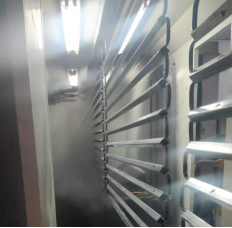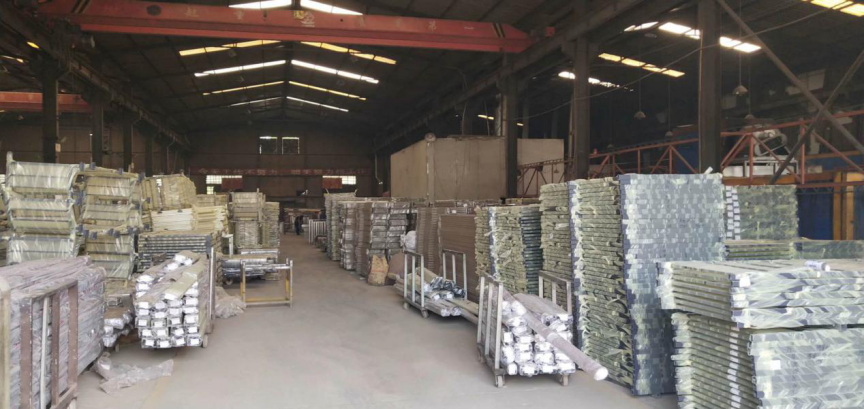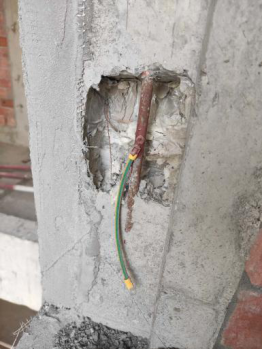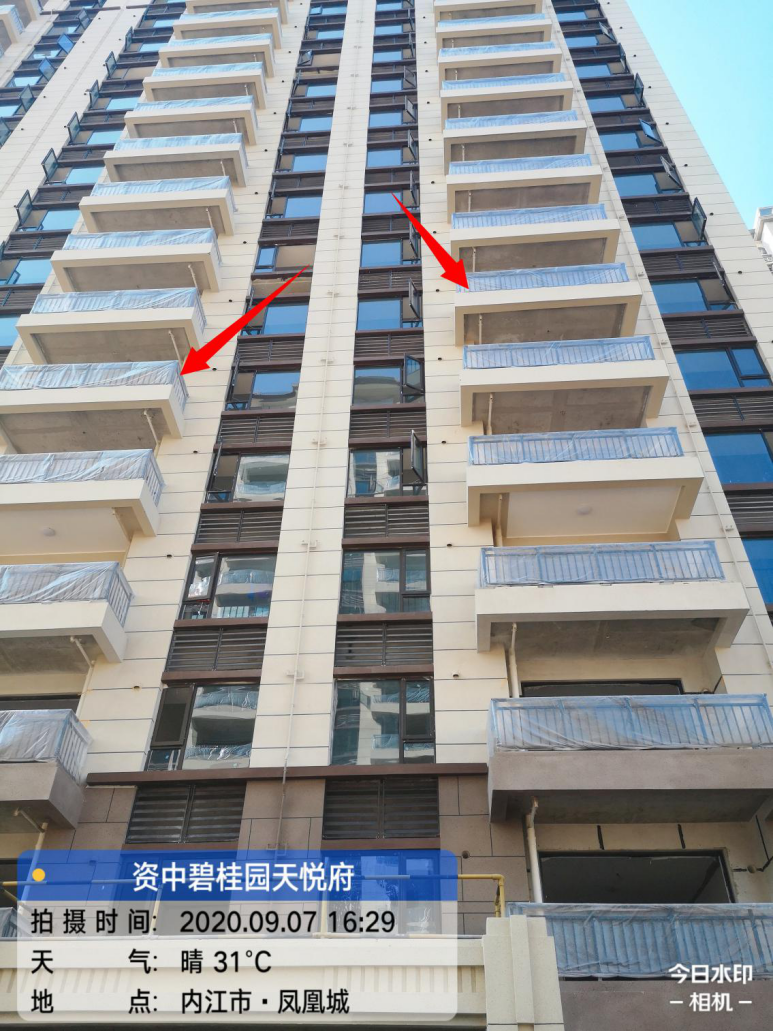
On-site measurement →→ raw material equipping →→ railing fabrication →→ grinding and surface treatment →→ electrostatic powder spraying →→ finished railing or frame installation (→→ glass installation)→→ finished product protection
1, site measurement: according to the specific situation of the site, our company specially sent professional and technical personnel to the site survey, according to the specific size and proportion to make specifications of the lofting, and make a series of preparatory work.
2, raw materials: according to the specific requirements of the relevant units, the raw materials are equipped. All kinds of raw materials must have the acceptance certificate issued by the relevant departments. After the acceptance and approval of the relevant units, the production can be made.
3, railing production: after the site construction lofting in the workshop standard production.
A, before lofting should check the construction drawing, familiar with the process standards, master the precise size of each component to strictly control the size accuracy; B. Measurement tools must be verified by legal units of measurement; C. Lofting should release the relevant nodes and connection sizes with the actual size of 1:1 of the construction drawing as the basis for controlling material marking and assembly, etc. D. If the sample is made on the construction platform, the processing allowance should be considered. The template should be marked tangent line, aperture, up and down, left and right, arc working line, indicate the specification, quantity and number, the mark should be small and clear. E, punching: punching production molding according to the stamping requirements. F, cutting: steel pipe using desktop grinding wheel cutting machine without punching requirements of the molding. F, cutting: the steel pipe is made of materials without punching requirements under the desktop grinding wheel cutting machine. If there are punching requirements, the pipe should be cut with the round pipe cutting machine, so that the excess burr can not be polished. When cutting a 45 degree Angle, use a special chamfering machine without burrs.
After the sample is installed on site, batch production will be carried out after acceptance and approval by the relevant units. Batch production must be consistent with the quality and design of the sample, welding and riveting must be firm, no cracks, pores, leakage of welding and other phenomena, welding must be full, and strive for perfection.

4, polishing and surface treatment: after the production of iron railings must be polished, the requirements of no burr, smooth surface. Then putty decorative bottom, base level, no cavity, processing in line with the requirements.
5, electrostatic powder spraying: hot galvanized iron railings by the quality inspector acceptance, first use the principle of electrostatic adsorption, on the surface of the railings evenly sprayed powder coating, and then pushed the sprayed railings into the curing furnace, heated to a predetermined temperature (generally 200 degrees), and the corresponding time (15 minutes); The finished product is obtained after cooling in the furnace.

6, finished railing or frame installation: installation of semi-finished railings after the field facade work, according to the site measurement, according to the design requirements, combined with the actual size, according to the site system installation, installation must be firm and no loose phenomenon. When the installation surface pipe of the railing enters the wall, each welding place shall be leveled with the wall brick. A. The surface pipe, column and embedded parts are welded and riveted and connected firmly. B. Expansion bolts used for surface pipes and columns must be firmly connected with the wall without loosening. C, glass installation horizontal and vertical, glue appearance beautiful, straight.

7. Glass installation: strictly check whether the glass meets the quality requirements, and deal with the glass with bubbles, missing angles and scratches in time.
8. Lightning grounding: the guardrail that needs to be grounded is connected to the lightning protection device according to the design requirements, and the connecting point of grounding is increased every 30m of the extension meter. The guardrail and lightning protection device are connected reliably, and its transition resistance is no more than 0.030. When the guardrail needs to be grounded, the grounding embedded parts or the connecting wire of round steel or flat steel with a length of not less than 200mm should be set aside in the leaddown line or the construction process of the jade ring. The connecting conductor between the guardrail and the reserved grounding terminal shall be round steel or flat steel, with the diameter of the round steel not less than 10mm, the section of the flat steel not less than 80m' and the thickness not less than 4mm. Metal guardrails and reserved earthing terminal connection using lap welding, welding in accordance with the following rules flat lap length of not less than twice the width of it, of not less than 3 surface welds (when the width of the flat is not at the same time, the lap length to width) round steel double-sided welds of lap length not less than 6 times of its diameter (when the diameter is not at the same time, the lap length will be subject to large diameter. When the round steel is connected with the flat steel, the lap length shall not be less than 6 times of the diameter of the round steel, and welding shall be performed on both sides. Flat steel and steel pipe, flat steel and Angle steel welding, close to the surface of 3/4 steel pipe or close to the outside of the two sides of Angle steel, upper and lower welding. In addition to the welding joint buried in concrete, with anti-corrosion measures. The welding between different metals adopts the fire clay fusion welding method.

9, finished product protection: after the product is fully installed and the paint is repaired, the product protection is carried out to ensure that the railing is not affected by the cross operation with other construction operations during the construction process.
